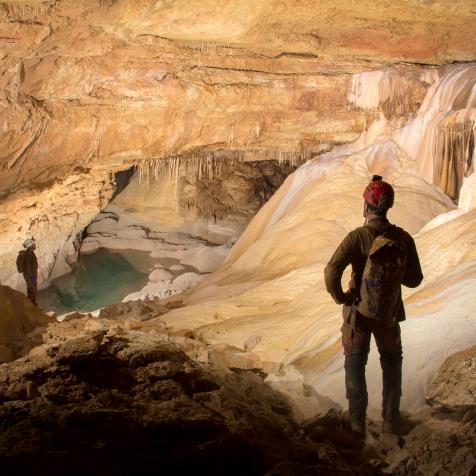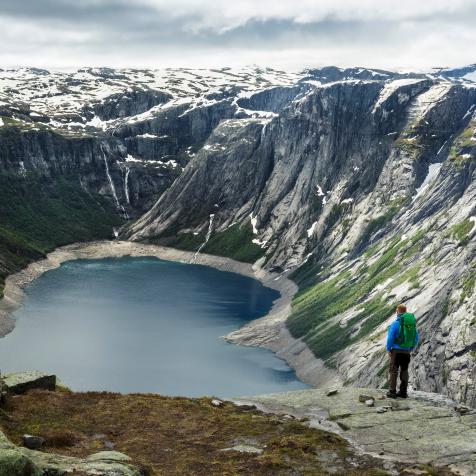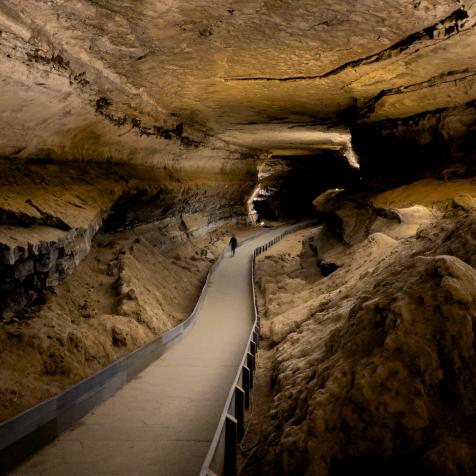
This Ancient Underground City Was Big Enough to House 20,000 People
Chicago, like a lot of other modern cities, has a hidden secret: It's home to miles of passageways deep underground that allow commuters to get from one place to another without risking nasty weather. Los Angeles, Boston, New York, and Dallas all have their own networks of underground tunnels, as well. But there's a place in Eastern Europe that puts those forgotten passages to shame. Welcome to Derinkuyu — the underground city.

A Subterranean Suburb
Picture this. It's 1963, and you're on a construction crew renovating a home. You bring your sledgehammer down on a soft stone wall, and it all crumbles away, revealing a large, snaking passageway so long that you can't see where it ends. This is the true story of how the undercity at Derinkuyu was (re-)discovered. While those workers knew they'd found something special, they couldn't know just how massive their discovery had been.
Stretching 250 feet (76 meters) underground with at least 18 distinct levels, Derinkuyu was a truly massive place to live. Yes, live. There was room for 20,000 people to stay here, complete with all of the necessities (and a few luxuries) — fresh water, stables, places of worship, and even wineries and oil presses. It isn't the only underground city in the area known as Cappadocia, but it's the deepest one we know of, and for many years, it was believed to be the largest as well. (Another recently discovered location may have been home to even more people.)

Derinkuyu and the other 40-ish underground cities nearby are made possible thanks to the prevalence of tuff in the area, a kind of volcanic rock that solidifies into something soft and crumbly. That makes it relatively easy to carve enormous subterranean passages — but why would you want to? The answer lies in the cities' origins.
Defense Against the Sword Arts
Derinkuyu isn't exactly inhospitable on the surface level (after all, that's where the people who found it were living). So why did ancient people decide to build their living quarters below the surface? Because they weren't hiding from the broiling sun or annual meteor showers. They were clearly hiding from invading forces, with massive, rolling stone doors to block off each floor should any armies breach the fortress. But who were the people of the caves, and who were they defending themselves against? The answer to the second question depends on the answer to the first.
The earliest known people to live in the area were the Hittites, who ruled the Turkish Peninsula from about the 17th to 13th centuries B.C.E. — well over three millennia ago. Some scholars point to artifacts with Hittite cultural elements, such as a small statue of a lion, found in the underground caves. That suggests these ancient people would have been taking refuge from invading Thracians.

If they were, it didn't work forever: A tribe of Thracians, the Phrygians, conquered the area next. It's possible that the Hittites never lived underground, however; an alternate theory says that it was the Phrygians, not the Hittites, who spawned the subterranean city. Since the construction of many of the large underground complexes is dated to some time between the 10th and 7th centuries B.C.E., and the Phrygians lived there until the 6th century B.C.E., they're generally regarded to have created the first caves. In that case, they may have been hiding from the Persian host under Cyrus the Great that eventually did take over the region.
Lost and Found
The Persians would have used those caves as well, as would all of the people to come after. Eventually, according to some sources, early Christians around the 2nd century C.E. took root in the caves as they fled Roman persecution. This pattern continued throughout the centuries and millennia to come — in fact, Greek Christians were still using the caves as late as 1923. It's pretty incredible, then, that the caves would have been forgotten in the 40-odd years between their last residents and their "re-discovery."
It's more likely, then, that it wasn't the caves themselves, but the extent of the caves that was forgotten. While the holes burrowed into the area's fairy chimneyswould have been obvious even from a distance, it's likely that the people living in more modern accommodations never realized that the caves in the wilderness outside of the urban area reached 18 stories down.
This article first appeared on Curiosity.com. Click here to read the original article.


















